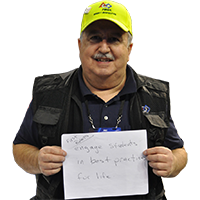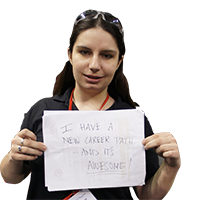We know that computers, robots, and many automated machines have control systems that are make out of logic gates. But those machines can\’t learn unless they run advanced programs.
Here is a robot controlled by brain cells that doesn\’t need to be programmed, and has its own intelligence.
Rat Brain Robot
NAO Robot: The Most Amazing Robot Ever!
The NAO robot, made by Aldebaran Robotics, is a platform created to play during the Robocup. Not only does it play soccer, but it has a on board computer that is fully programmable, and an assortment of sensors including an inertial sensor in the case it falls over, a tactile sensor for human interaction, two cameras enable it to accurately track objects. The NAO is also able to communicate to other NAO’s through wifi, infrared, or through voice. Being fully programmable, the NAO robot is perfect for educational and developer programming, as it can perform so many cool things, such as dancing, and playing soccer. Today, there are over 1500 NAO\’s being used as platforms for education and development.
Google’s Prototype Auto-driving Car
Recently, Google has been testing a prototype of an auto-driving car. Sounds absurd, but its true!
Using the Toyota Prius as the medium, members of the project have used a spinning laser on top of the car to sense the environment in all directions. Inside the car, a GPS receives input from the laser, and also plots a route, detects speed limits, and ultimately, drives itself to the final destination. In doing this project, Google hoped to make travel by car safer, easier, and ultimately more pleasurable for the driver. While some driving ability is still required, the car can navigate and turn its own steering wheel for long stretches of time.
However, Google has no plans on bringing this auto-driving car onto the consumer market any time soon, due to the fact that they don’t know how much it would cost.
-Matt Wang
‘Living’ Robot for Disease Detection
Called ‘Cyberplasm’, it will combine advanced microelectronics with latest research in biomimicry. The system, loosely based on a sea lamprey, will have an electronic nervous system, ‘eye’ and ‘nose’ sensors, as well as artificial muscles that use glucose as an energy source to propel it.
The intention is to engineer and integrate robot components that respond to light and chemicals in the same way as biological systems do to create something that will allow scientists to merge seamlessly with the human body. Read more about the researchers plans below.
http://www.sciencedaily.com/releases/2012/03/120329112107.htm
2012 FIRST Robotics Championships
Recently, close to 30 thousand spectators and competitors gathered in St. Louis to compete in the largest robotics competition in the world. The following 4 minute clip is one of the best I’ve ever seen. It captures the excitement and all the motion in the competition. Note to self: Make sure to attend next year, even if its in the middle of final exams…



















































